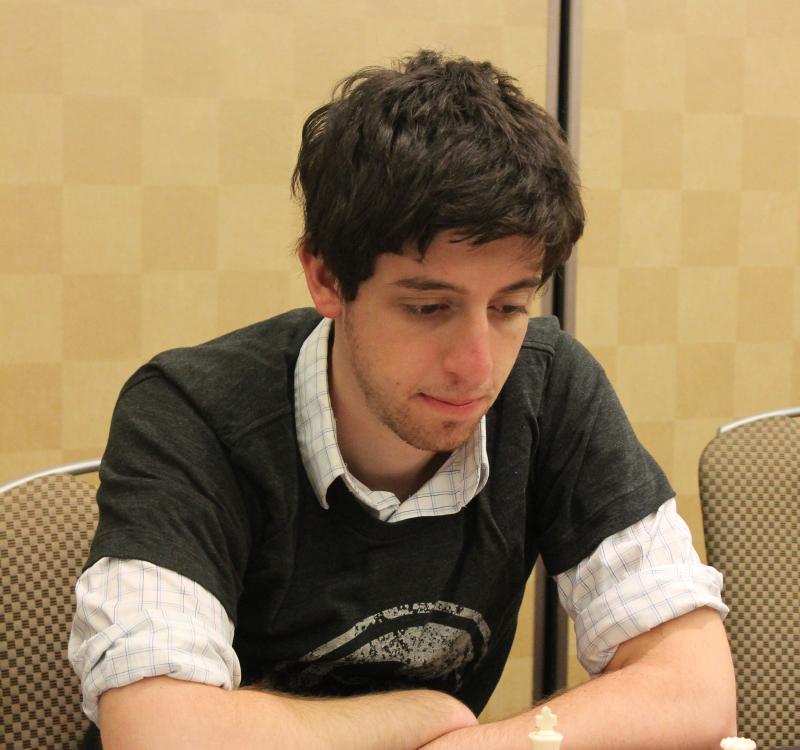
Kostya's Blueprint (to Chess Mastery): Learning Structures
Let's work our way backwards for a moment and try to break things down as much as possible... What's the point of chess? To test yourself mentally, emotionally, and spiritually in a battle of wits and intellect against a fellow human. Ok maybe that's a bit too far  backwards. How do you win a game of chess? Checkmate. How do you achieve checkmate? You trap the enemy king with your pieces while avoiding stalemate. How do you trap the enemy king? Well, there are two main ways:
backwards. How do you win a game of chess? Checkmate. How do you achieve checkmate? You trap the enemy king with your pieces while avoiding stalemate. How do you trap the enemy king? Well, there are two main ways:
1) Launch a successful attack. Simple enough. If you learn how to organize your forces effectively and train yourself to be able to spot tactical combinations you will win many chess games simply by being aggressive and going after your opponent's king. The drawback here is that as you face stronger players, they will know a thing or two about defense and it might not always be possible to launch a winning attack in every single game. Which brings us to #2:
2) Capture all of your opponent's pieces. Once you do this it will be much easier to trap the enemy king using your remaining pieces (all you need is either a queen, rook, two bishops, or knight + bishop). This method offers a broader scope for winning, because there are many different ways to outplay your opponent and achieve a decisive advantage.
So how do you outplay your opponent? In games that aren't decided by tactical blunders, the winning side is usually the player who understands the middlegame better, and thus plays better moves (simple enough)!
In order to understand a particular middlegame or a specific structure, you should try to understand it from many different aspects. You need to be able to answer the following questions, for both White's and Black's perspective:
General - What kind of position is it (open, closed, semi-closed)? How sharp/dynamic is the position (i.e. are a lot of pieces hanging or is it quiet, is there a lot of pawn tension)? Knowing how sharp the position is gives you a hint as to whether you should be looking to play aggressively with forcing moves, or rather slowly by improving your position with piece maneuvers and space-grabbing pawn moves.
Pieces - Where would each piece be most effectively placed, aka "where do the pieces belong"? Which piece is the worst, aka a "problem piece"? Which trades would be favorable to you, which ones would benefit your opponent?
Pawns - Where are all the weaknesses in the position? Can these weaknesses be attacked by the opponent's pieces or not? Who would have the better structure in an endgame? <-- This last question is very helpful in a practical way, as it tells you whether or not you should be trying to exchange pieces.
Plans - What are the most typical plans (for both sides)? If you're still unclear as to what a good plan is, ask yourself: What are the potential pawn-breaks, pawn advances, or piece maneuvers in this position? Are there any weaknesses I can put pressure on? Do I have any weaknesses that my opponent can target? Is the enemy king vulnerable, how can I organize an attack?
The first time you break down a position with these questions may be quite confusing. There's a lot going on in any particular position, and when we lack experience we'll tend to overvalue some ideas and underestimate other ideas. This is perfectly natural and it would be unreasonable to expect a clear understanding the first time you look at a new middlegame.
For now, I've annotated the following game against IM Rostislav Tsodikov--it was played at the Mechanics Chess Club in San Francisco during a weekly blitz competition. The game shows how my understanding of a specific structure helped me play reasonably well and beat a strong opponent, but the game is also far from perfect, and I hope that by going over it I've learned from my mistakes:
So what did I learn from this game? For one, I was reminded that Black cannot fianchetto his dark-squared bishop in this line! (In future games, I'll definitely be playing Qe2+ if my opponents try that again  ) Also, I found it quite instructive to see how the computer did not care so much about White's passed c-pawn in the endgame, and was able to find a precise defense quite easily. In future games I hope that I won't overestimate the strength of such a pawn again.
) Also, I found it quite instructive to see how the computer did not care so much about White's passed c-pawn in the endgame, and was able to find a precise defense quite easily. In future games I hope that I won't overestimate the strength of such a pawn again.
What I hoped to communicate with this blog is that by studying games in a specific structure, your understanding of that structure will improve greatly, which will help you play good chess! In Part 2 I will discuss how one can most effectively study openings through this approach. If you found the annotated game and/or my breakdown above of "how to understand a position" instructive by asking key questions, please let me know! Or if you absolutely hated this blog/had some questions/insights, do comment below as well  .
.
-Kostya